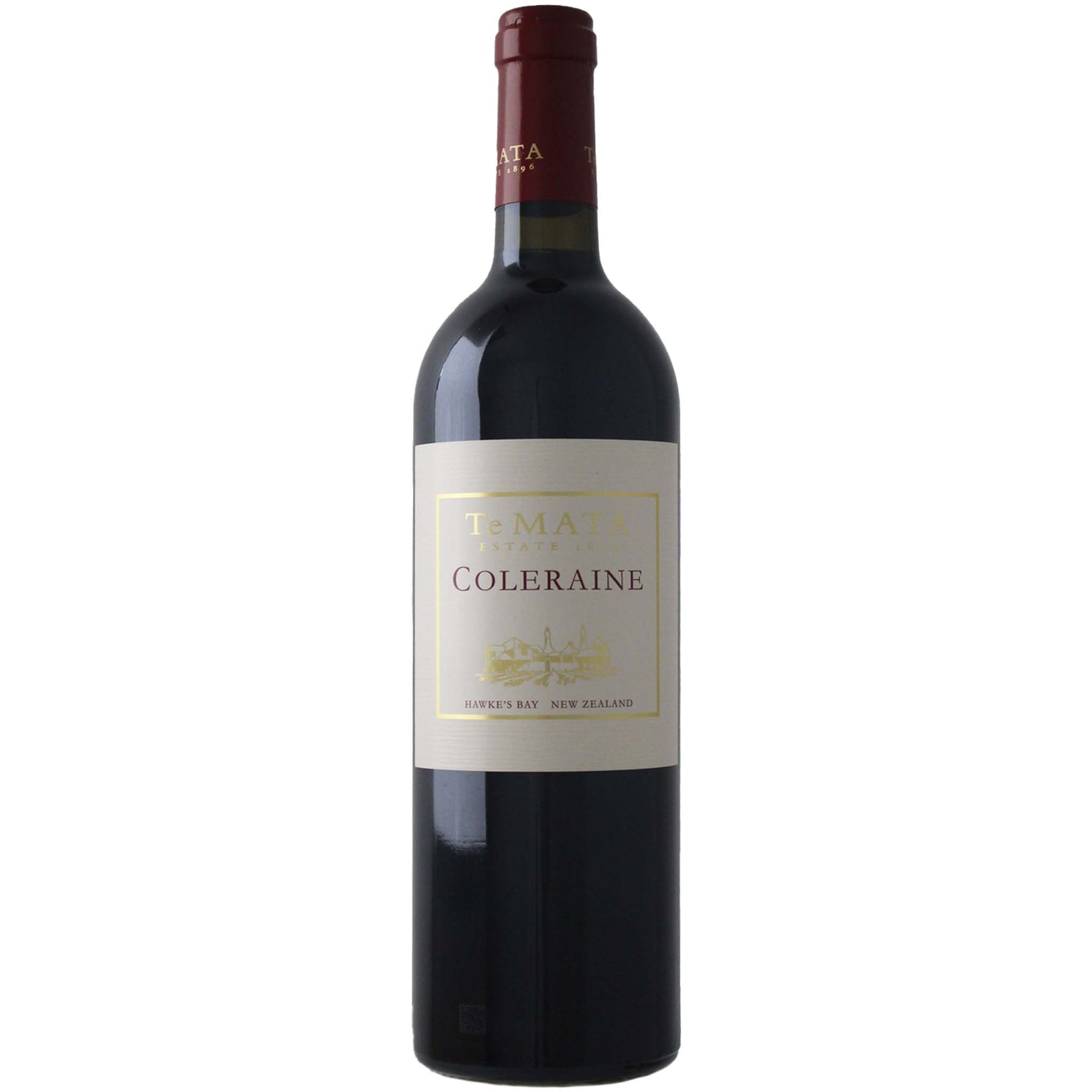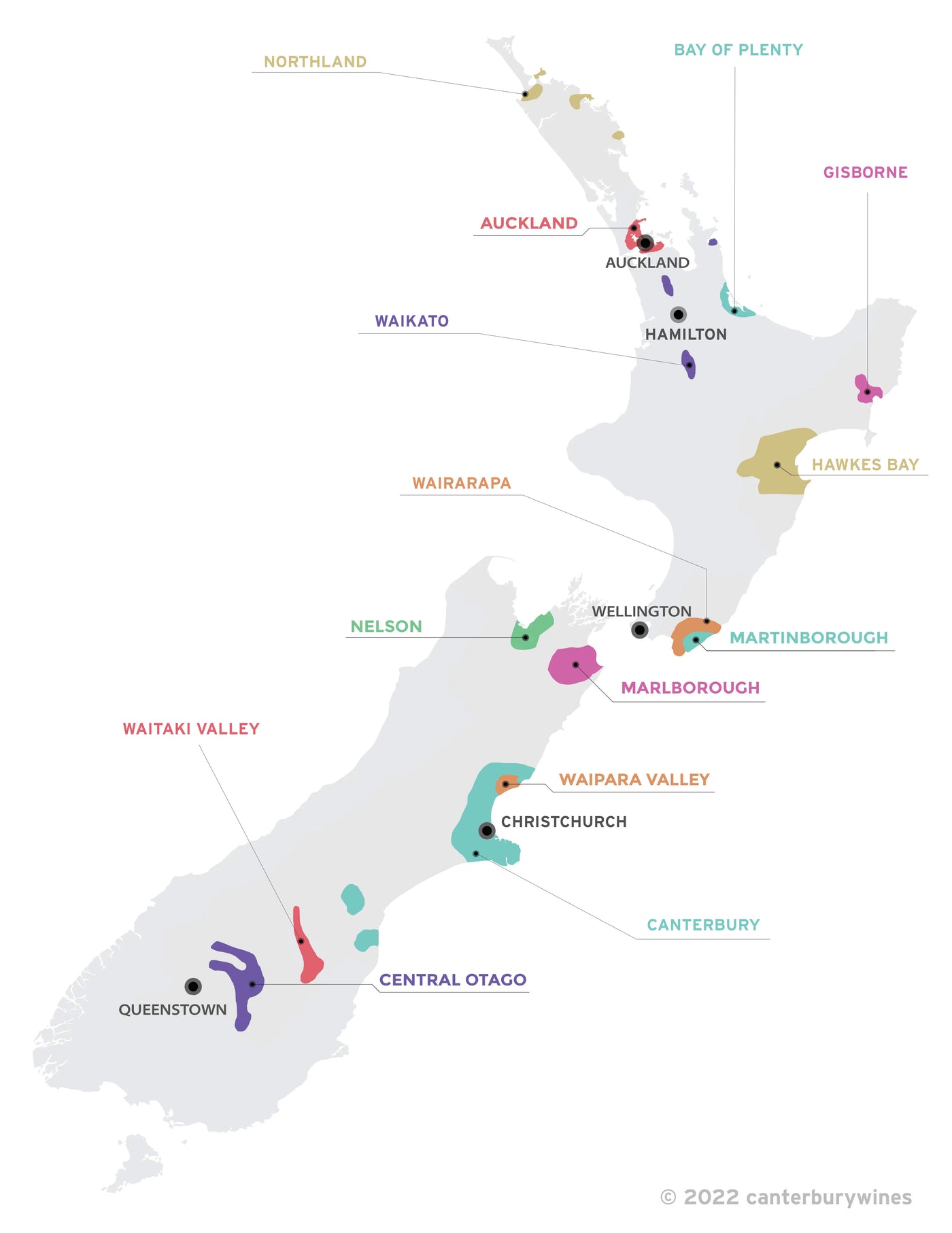

Te Mata Estate Coleraine 2016
Style: Red Wine
Closure: Cork
Te Mata Estate Coleraine 2016
Warehouse
34 Redland Drive
Vermont VIC 3133
Australia
Critic Score: 97
Alcohol: 13.5%
Size: 750 ml
Drink by: 2040
Te Mata Estate was acquired by John Buck in 1974 and the Buck family have been producing Te Mata wines ever since. Coleraine is named after John's family ancestral hometown in Northern Ireland. Coleraine is Te Mata Estate's flagship wine and is regarded by many as New Zealand's finest red wine. First produced in 1982, Coleraine is a classic blend of cabernet sauvignon, merlot and cabernet franc.
"This superstar label delivers precision, purity and poise with this latest offering. Exhibiting scintillating clarity together with seductive complexity, the bouquet shows red/dark fruit, game, cigar, cedar and violet notes on the nose. The palate is concentrated and focused with stunning fruit weight and intensity, superbly structured by loads of fine, chalky tannins. The wine offers great presence on the palate, and delivers perfect line, length and balance." Sam Kim
The 2018 Coleraine is a blend of 51% cabernet sauvignon, 47% merlot and 2% cabernet franc.
"If the Langton's Classification crossed the Tasman, Te Mata Coleraine would sit alongside Grange at its very pinnacle. Established, esteemed, outstanding – vintage after vintage, the glowing adjectives come thick and fast." Langtons
"Brilliant magenta, Coleraine '16 entices with concentrated rose syrup, fresh, fragrant raspberry, wild strawberry, ripe plum, thyme and cedar. Offering superb depth and complexity, Coleraine '16 is defined by a precise, lazer-edge of pure, bright, red fruit. Framed by tight acid and silky tannins, all this extends elegantly into an exquisite and super-fine crescendo, giving exceptional length and finesse to the wine." Te Mata Estate
Te Mata Estate Winery
Expert reviews
"This superstar label delivers precision, purity and poise with this latest offering. Exhibiting scintillating clarity together with seductive complexity, the bouquet shows red/dark fruit, game, cigar, cedar and violet notes on the nose. The palate is concentrated and focused with stunning fruit weight and intensity, superbly structured by loads of fine, chalky tannins. The wine offers great presence on the palate, and delivers perfect line, length and balance. At its best: 2022 to 2032." Sam Kim, Wine Orbit – 97 points
"Exquisite, sublime, benchmark stuff." Mike Bennie, The Wine Front - 97 points
"A head-spinning array of violet, red and black fruits, gentle spiced biscuit oak, green olive, and lead pencil. It's medium-bodied, succulent, yet firm, with toothsome tannin, a beautiful mouth-perfume, black tea and small just ripe berries, and a finish where freshness, vibrancy and tannin push the wine very long. A classic vintage. Stunning wine. Precision. Tasted: Mar 18; Alcohol: 13.5%; Price: $110; Closure: Cork; Drink: 2019-2038+." Gary Walsh, The Wine Front - 97 points
"Full, dark, deep, black-hued ruby-red colour. The nose is softly full and elegantly presented with well-packed and dense aromas of blackcurrant and blackberry fruit along with dark herb and mineral notes. Some ethereal black florals, and complexing savoury black olive and nutty oak notes unfold with aeration lending detail. Medium-full bodied, the flavours are bold, up-front and show intensity, with a tightly bound heart, showing ripe dark-red and blackberry fruit, along with blackcurrant notes, dark-red plums and a layering of dark herbs. The fruit is elegantly rich and sweet, and is enlivened by a fine acid edge. The fruit is supported by considerable fine-grained, powdery tannin extraction lending serious structure. The wine carries to an elegant, refreshing, lingering finish. This is a more elegant 'Coleraine' with black fruits and plenty of structure and finesse. 10 years easily. Hand-picked fruit, a blend of 51% Cabernet Sauvignon, 47% Merlot and 2% Cabernet Franc, fermented to 13.5% alc., the wine aged 18 months in 70% new French oak barrels.” Raymond Chan – 18.5/20 points ★★★★★
"Darker, riper fruit notes dominate the bouquet: black and red fruits with some typical violet and blueberry grace notes. It's a bright, fresh, tightly-focused wine with terrific line and length. Full-bodied, with abundant fleshy extract and tannin structure providing appropriate grip. This seems a riper style and very good indeed. Drink: 2020–2044." Huon Hooke, The Real Review – 96 points
The story of coleraine

Te Mata Estate was acquired by John Buck in 1974 and the Buck family have been producing Te Mata wines ever since. Coleraine is named after John's family ancestral hometown in Northern Ireland.
"Coleraine is New Zealand's greatest red wine" - Sydney Morning Herald
Coleraine is Te Mata Estate's flagship wine and is regarded by many as New Zealand's finest red wine. First produced in 1982, Coleraine is a classic blend of cabernet sauvignon, merlot and cabernet franc, and displays the concentration, complexity and elegance found in the world's greatest wines. Coleraine showed the world that Hawke's Bay, and indeed New Zealand, was capable of making world class red blends.
Cabernet Sauvignon is nearly always the dominant grape variety but the blend has ranged from 94% Cabernet Sauvignon in 1982 down to just 25% in 2002. The remainder of the blend is predominantly Merlot with, usually, the addition of small amounts of Cabernet Franc.
The earlier vintages of Coleraine from 1982 to 1988 were all single-vineyard blends from the Coleraine vineyard. From 1989 onwards, the wine has been a blend of grapes from across the Te Mata Estate vineyards that were planted in 1982.
Peter Cowley joined Te Mata as their sole winemaker in 1984, two years after Coleraine's inaugural vintage. He has been responsible for all the subsequent vintages until his retirement in 2019. Peter handed over the reins to now senior winemaker Philip Brodie, who has been part of the Te Mata Estate team since 1992.
"The absolute strength of Bordeaux blends is in different varieties and different soils, and that's where we started. But it is also really about the people that put these wines together, who made them what they are.
Although it might have been inspired by Bordeaux, the thing about Coleraine is that it has really come out of that shadow and it has developed its own voice and style in that time. When you go through 32 years of Coleraine, we are looking at New Zealand history – we are stepping out of the shadow of Bordeaux and taking pride in New Zealand." Toby Buck, Te Mata Estate
Nick Buck discusses Coleraine
About the winery

Te Mata Estate was established in 1896, specialising in high-quality wines of classical style. The winery remains family owned, producing internationally recognized wines exclusively from its Hawke's Bay vineyards.
"New Zealand's first growth" - Andy Howard MW, Decanter Magazine
"A national treasure" - Jancis Robinson MW
"New Zealand's greatest winery" - Robert Parker's Wine Advocate
Te Mata Estate was originally part of Te Mata Station, a large pastoral land-holding established by English immigrant, John Chambers, in 1854. After returning from France, John Chamber's third son, Bernard, had the idea to plant vineyards on the north-facing hills around Havelock North. In 1892 he planted vines on three parcels of hillside land above the homestead and began converting the original stables to ferment and mature the wines. The first vintage wines were released in 1986. Today, Te Mata Estate still uses those same three vineyards.
The Chambers family sold the property in 1919. The property had two other owners until John and Wendy Buck acquired Te Mata Estate in 1978 and instigated a twenty-year development program, which commenced with the restoration of the original winery building and the replanting of all of the original vineyards. In addition, new vineyard sites were acquired in the Bridge Pa, Gimblett Gravels and Dartmoor Valley sub-regions of Hawke's Bay (refer map below). The Buck family have been producing Te Mata wines ever since. The success of Te Mata's wines in the '80s is credited with sparking the revival of Hawke's Bay as a top wine region.

Te Mata Estate Winery and Hawke's Bay sub-regions

New Zealand
New Zealand is home to more than 700 wineries across 14 wine regions. The regions are Auckland, Bay of Plenty, Canterbury, Central Otago, Gisborne, Hawkes Bay, Marlborough, Martinborough*, Nelson, Northland, Waikato, Waipara Valley, Wairarapa and Waitaki Valley. * Martinborough is a sub-region of Wairarapa, however, as it is world renowned it is considered here to be a region to avoid confusion.
The wine regions in New Zealand stretch from latitudes 36°S (Northland) in the north (comparable in latitude to Jerez, Spain), to 45°S (Central Otago) in the south (comparable in latitude to Bordeaux, France). New Zealand's climate is maritime, producing cooler summers and milder winters than would be expected at similar latitudes in Europe.
Viticulture in New Zealand dates back to 1836 when British resident James Busby produced wine in the far north, but it wasn't until 1985 that the wine industry came of age when Cloudy Bay Sauvignon Blanc garnered international attention and critical acclaim.
New Zealand is internationally renowned for Sauvignon Blanc (particularly from Marlborough), Pinot Noir (Central Otago, Martinborough and Waipara Valley), Chardonnay, Bordeaux-style blends of mainly Merlot and Cabernet Sauvignon (Hawkes Bay) and Syrah (Hawkes Bay). Sauvignon Blanc accounts for 63% of the area of the national vineyard, followed by Pinot Noir (14%), Chardonnay (8%), Pinot Gris (7%) and Merlot (3%).



